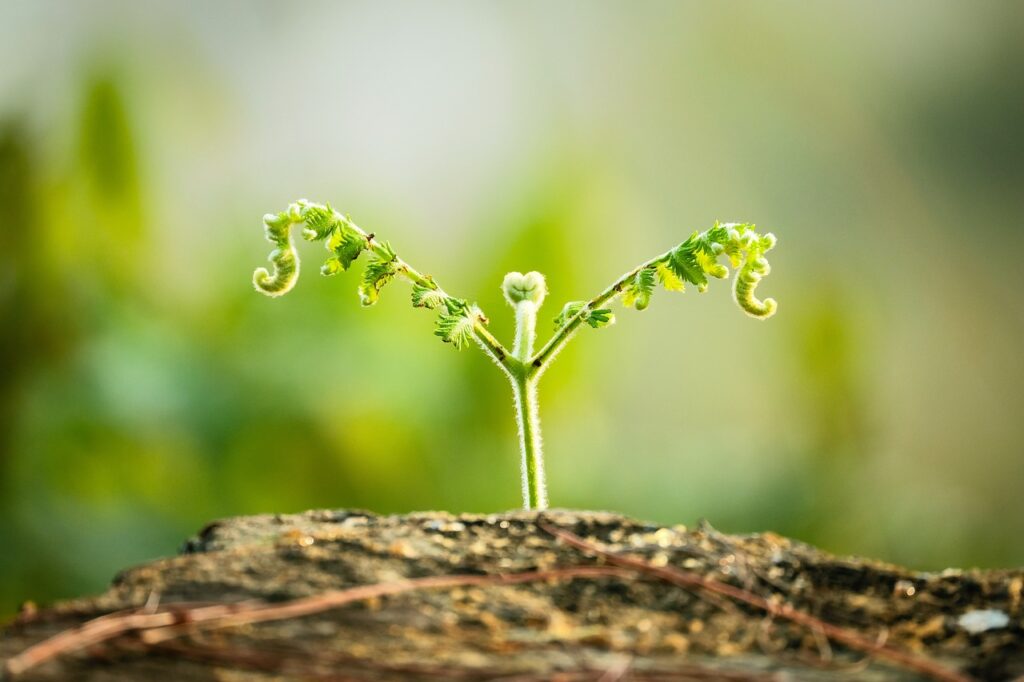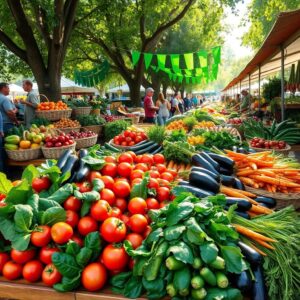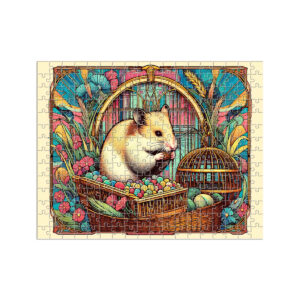
Explore & Play
Discover interesting topics and solve the accompanying crossword puzzle.
Growth Crossword | Plant Growth Stages and Personal Development
Table of Contents
Welcome to our blog post on the fascinating topic of plant growth! To enhance your learning experience, we invite you to start with our “Growth crossword” puzzle. This interactive crossword will challenge your knowledge of the various stages and elements of plant growth. If you’re new to the topic or want to refresh your understanding, feel free to dive into the article first and then return to the crossword to test your insights. Enjoy the exploration of how plants grow and thrive, and see how much you can discover with both the crossword and the article!
Growth Crossword
You can either fill in the crossword puzzle directly on this page or click the button in the bottom right corner to print it for free.

From Roots to Radiance: The Science Behind Healthy Plant Growth
Growth is an incredible journey, whether it’s in a garden, in personal development, or in the world around us. From a tiny seed to a flourishing plant, growth unfolds in stages filled with transformation, adaptation, and resilience. Each phase is crucial, contributing to the plant’s ability to thrive. To understand this process better, let’s delve into the fascinating science behind healthy plant growth. As you read, consider the challenge of a growth-themed crossword puzzle — a fun way to reinforce your understanding of the various terms and stages that make plant growth possible.
Section 1: The Beginning of Growth – From Seeds to Seedlings
Every great growth story starts small — with a single seed. This tiny powerhouse contains all the potential needed to become a vibrant, mature plant. Seeds are the foundation of life for most plants, holding the blueprint for growth in their compact shells. When conditions are right, the seed absorbs water, swells, and begins to germinate. This initial stage is critical, as the seed awakens from dormancy and starts its transformation into a seedling.
As the seed germinates, it sends out its first sprout, pushing through the soil in search of light. Meanwhile, roots begin to form, anchoring the seedling and absorbing essential water and nutrients. It is a delicate phase, where proper moisture, warmth, and sunshine are crucial. With nurturing care, these seedlings grow stronger, preparing for the next stage of their development.
Section 2: Nurturing Young Plants – The Role of Care and Conditions
Just as we need care to grow, young plants require the right conditions to thrive. To ensure robust growth, gardeners must nurture their plants, providing them with adequate water, nutrients, and protection from pests and harsh weather. Proper fertilization is key, enriching the soil with essential nutrients like nitrogen, phosphorus, and potassium. These nutrients help plants build strong roots and develop healthy foliage.
Caring for plants also involves ensuring they have enough space to grow. Crowded plants may compete for light, water, and nutrients, stunting their growth. To avoid this, gardeners often cultivate their soil, loosening it to promote better root growth and water absorption. Additionally, plants need to adapt to their environment. Some may require more sunlight, while others need shade or shelter from the wind. By understanding these needs, we can create conditions where plants are more resilient and capable of flourishing.
Section 3: Reaching New Heights – Budding, Blooming, and Beyond
As plants grow, they begin to reach for the sun, blossoming into their full potential. After the initial stages of growth, plants enter the phase of budding. Here, tiny buds form along the stems, holding the promise of future blooms. These buds slowly unfold, revealing delicate flowers that not only add beauty to the environment but also play a crucial role in reproduction.
The blossoming process is one of nature’s most captivating displays, symbolizing growth and renewal. During this phase, plants experience rapid expansion, extending their stems and leaves upward and outward in search of sunlight. This upward movement, or upgrowth, is essential for photosynthesis — the process by which plants convert light energy into food.
Sunshine acts as a vital energy source, enabling plants to create the sugars they need to survive and grow. With the right amount of sunlight, water, and nutrients, plants can become truly radiant, displaying vibrant colors and healthy leaves. They not only flourish but also contribute to the ecosystem by providing oxygen, food, and shelter.
Section 4: Challenges and Resilience – Surviving Against the Odds
In nature, growth is often accompanied by obstacles that test resilience. Plants must overcome various challenges to survive, from pests and diseases to droughts and harsh climates. To do so, they have evolved incredible strategies to defend themselves and regenerate after damage. For example, some plants produce chemicals to deter insects, while others develop tough outer layers to protect against the elements.
When faced with extreme conditions, plants often undergo a form of transformation or metamorphosis. This may involve shedding leaves during a drought to conserve water or changing leaf color to reduce sun exposure. Through these adaptations, plants demonstrate remarkable resilience and the ability to bounce back from adversity.
The concept of regeneration is particularly fascinating. Even when parts of a plant are damaged or lost, many species can repair themselves, growing new leaves, stems, or roots. This regenerative ability is not only a testament to nature’s power but also a reminder that growth is an ongoing process, filled with both challenges and opportunities.
Section 5: Sustaining Growth – The Importance of Continuous Care
To ensure sustained growth, continuous care and attention are essential. Even after plants have reached a mature stage, they still need regular maintenance to stay healthy. Simple practices like watering, pruning, and removing weeds can significantly impact a plant’s ability to thrive. Additionally, transplanting young plants to new locations with more space or better conditions can promote further expansion and development.
Effective cultivation practices, such as crop rotation or companion planting, help maintain soil health and prevent the build-up of pests and diseases. These techniques ensure that plants continue to receive the nutrients they need, preventing soil depletion and encouraging long-term growth. Moreover, understanding the specific needs of different plants allows gardeners to tailor their care, promoting a healthy, flourishing garden.
Section 6: From Garden to Ecosystem – The Broader Implications of Growth
Growth extends beyond individual plants to encompass entire ecosystems. When plants grow, they do more than just beautify a garden; they support a vast network of life. Plants provide food and shelter for insects, birds, and mammals, creating a rich and diverse ecosystem. Their roots help stabilize the soil, preventing erosion, while their leaves absorb carbon dioxide and release oxygen, improving air quality.
Adopting sustainable gardening practices, such as using renewable resources, conserving water, and minimizing chemical use, can have a profound impact on the environment. These practices help create healthier ecosystems that are more resilient to climate change and other threats. The ripple effect of a healthy garden can lead to thriving local ecosystems, enhancing biodiversity and promoting environmental prosperity.
Section 7: Applying Growth Lessons to Life – A Metaphor for Personal Development
The lessons learned from nurturing plants can be applied to our own personal growth journeys, offering valuable insights and strategies for achieving success and fulfillment in various aspects of life. Just as plants require specific conditions to thrive, so do we need certain elements to support our development and reach our full potential. In this section, we will explore how the principles of plant growth can serve as a metaphor for personal development and how we can use these lessons to cultivate a more rewarding and resilient life.
1. Nurturing Growth: The Foundation of Personal Development
Just as plants need water, sunlight, and nutrients to grow, individuals need support, encouragement, and the right environment to thrive. This nurturing aspect involves creating a positive and enriching environment that fosters growth. For plants, this means providing fertile soil and adequate care; for people, it means surrounding ourselves with supportive relationships, pursuing meaningful goals, and engaging in activities that contribute to our personal and professional growth.
Supportive Relationships: Building a network of mentors, friends, and colleagues who offer guidance and encouragement can make a significant difference in our development. These relationships provide the nurture we need to overcome challenges and pursue our aspirations.
Meaningful Goals: Setting clear, achievable goals provides direction and motivation. Just as plants need a growth plan to flourish, having well-defined objectives helps us focus our efforts and measure our progress.
2. Embracing Change: Adapting to New Challenges
Plants often face changing environmental conditions and must adapt to continue growing. Similarly, we encounter various challenges and transitions throughout our lives that require flexibility and adaptability. Embracing change and learning to navigate new circumstances is crucial for personal development.
Adaptation: Being open to change and willing to adjust our strategies allows us to thrive in different situations. Just as plants may develop new strategies for survival, we can cultivate resilience by adapting our plans and approaches when faced with obstacles.
Learning from Challenges: Each challenge presents an opportunity for growth. By viewing setbacks as learning experiences, we can build strength and gain valuable insights, much like how plants learn to cope with adverse conditions.
3. Continuous Improvement: The Role of Perseverance
Plants that receive consistent care and attention tend to grow stronger and more vibrant. In our lives, maintaining a commitment to continuous improvement and personal growth requires perseverance and dedication.
Ongoing Effort: Just as plants need regular watering and maintenance, we need to invest time and effort into our development. Whether it’s through further education, skill-building, or self-reflection, continuous effort helps us achieve and sustain growth.
Self-Reflection: Regularly evaluating our progress and setting new goals helps us stay motivated and focused. Like a gardener who assesses the health of plants and makes necessary adjustments, reflecting on our experiences allows us to refine our strategies and continue evolving.
4. Celebrating Achievements: Recognizing Growth and Success
As plants reach new milestones, such as flowering or producing fruit, it’s important to recognize and celebrate these achievements. Similarly, acknowledging our accomplishments and milestones reinforces our progress and motivates us to continue striving for success.
Celebrating Success: Taking time to appreciate our achievements, no matter how small, boosts our confidence and morale. Celebrating these moments helps us stay motivated and reinforces the positive habits and efforts that contributed to our success.
Setting New Goals: After reaching a milestone, setting new goals and challenges ensures ongoing growth and development. Just as plants continue to grow and produce new blooms, we should continually seek new opportunities for learning and advancement.
5. Applying Growth Principles to Everyday Life
By applying the principles of plant growth to our personal development, we can create a more structured and intentional approach to achieving our goals. These principles provide a framework for understanding how to foster growth, adapt to change, and pursue continuous improvement.
Growth Mindset: Adopting a growth mindset involves believing in our ability to develop and improve through effort and learning. This mindset encourages us to embrace challenges, persist through difficulties, and continually seek ways to grow.
Resilience and Flexibility: Building resilience and being flexible in our approach helps us navigate the ups and downs of life. By learning to adapt and persevere, we can overcome obstacles and continue making progress toward our goals.
Personal Growth Plan: Creating a personal growth plan that outlines our goals, strategies, and milestones helps us stay focused and organized. This plan serves as a roadmap for our development, guiding us through the various stages of growth and ensuring that we remain on track.
Conclusion: Nurturing Growth in All Forms
Growth, whether in a garden or in our personal lives, is a dynamic and ever-evolving process. It requires patience, care, and the willingness to embrace change. Just as plants stretch toward the sun, reaching for new heights, so too can we strive for continuous improvement and renewal. By understanding the science behind growth and applying its lessons to our own journeys, we can cultivate not only beautiful gardens but also richer, more fulfilling lives.
So, as you explore the world of growth, take a moment to engage with our crossword puzzle and challenge yourself to see how much you have learned. Remember, growth is everywhere — in every seed, every challenge, and every step forward.
Share to...
I hope you enjoy the content.
Want to receive our daily crossword puzzle or article? Subscribe!
You may also be interested in
Share to…
Want to receive our daily crossword puzzle?
-
Jigsaw Puzzles
Flåm Railway Abstract Art Jigsaw Puzzle 250 | 300 | 500 Pieces
kr 348,00 – kr 439,00 Select options This product has multiple variants. The options may be chosen on the product page -
Jigsaw Puzzles
Charming Hamster Art Nouveau Jigsaw Puzzle 250 | 300 | 500 Pieces
kr 348,00 – kr 439,00 Select options This product has multiple variants. The options may be chosen on the product page -
Jigsaw Puzzles
Blue-Eyed Kitten Puzzle Delight 250 | 300 | 500 Pieces
kr 348,00 – kr 439,00 Select options This product has multiple variants. The options may be chosen on the product page

















